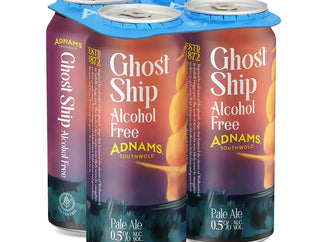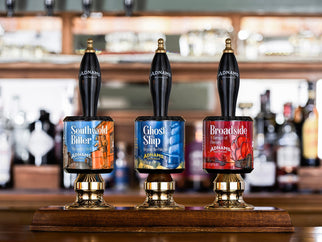Cask beer leaves the brewery unfinished, and we rely on you to complete the job for us. Looking after your cask beer properly can bring in great rewards. Did you know that better cellar management can increase your sales by up to 8%! (Cask Marque, 2021). Customers often return to establishments they know serve the best pint, so join us in our continuing quest for quality and take a look at our top tips to help you serve it in perfect condition every time.
1. Keep things clean.
Keeping your cellar and your lines clean is of vital importance. It may take time, but it also prevents costly problems like poor yield, equipment issues and loss of customer confidence.
- Sticky beer deposits are a breeding ground for things that can spoil beer. Keep everything clean and in working order.
- We recommend a cellar temperature between 11-13˚C.
- Clean taps between casks to prevent cross contamination.
- Clean your lines at least every seven days, following the instructions carefully.
2. Keep on top of your stock.
When your delivery arrives, take the time to make some initial checks. It will catch any issues early.
- The shelf life of cask can vary, depending on the product, but it is generally around 8 weeks from filling - and then it has to reach you.
- Make sure your order is correct and that all casks are labelled for identification and date.
- Check the best before date and rotate your stock accordingly.
- Ensure there is no damage to the vessel or its seals and that they are all seated correctly.
- Don’t store your casks outside. Get them into temperature-controlled storage quickly.
- Mark in chalk (not in marker please) or on the label the order you’re going to use them.
- Get to know what the labels on your casks tell you.
3. Keep things cool.
Temperature plays an important role in the conditioning of beer, as well as its appeal.
- After delivery, get your casks aacclimatised to 11-13°C.
- Venting begins secondary fermentation. The yeast consumes the residual sugars in the beer, developing its flavour and producing Co2 to give it carbonation. If it is too warm, or too cold, it can cause issues from lack of flavour, to pouring flat or fobbing in service.
4. Keep things secure.
Casks are barrel-shaped, with a belly. When on their side with the shive (large bung) at the top, and the keystone (small bung) at the bottom, it creates an air pocket around the shive for conditioning. We add finings, to help the yeast settle in the belly of the cask - clearing the beer as it drops.
- If you store stock upright, don’t forget to redistribute the yeast and finings before racking.
- Give your casks a gentle roll back and forth to redistribute any yeast back into suspension.
- Do not move your casks once they are settling or it will disturb the sediment.
- Auto tilting stillage’s action gets maximum yield from a cask and reduces disturbance.
- Carry out manual tilting at the end of a session, allowing disturbed sediment time to settle.

5. How to really keep beer.
Try and allow as much time as possible to prepare your casks for sale. It’s a live product, so each one will behave differently, and you will need to adjust your actions accordingly.
- Leaving beer to acclimatise and settle before venting or tapping is a sensible precaution.
- Clean the shive and keystone with food-grade detergent to prevent contamination.
- Spiles (wooden pegs for venting/sealing casks) can be soft (porous) or hard (non-porous). Use a clean set for each cask to prevent any cross-contamination.
- Soft spiles are used to vent the cask, allowing it to ‘breathe,’ as excess Co2 and unwanted aromas escape. They are used in service so air can flow when beer is drawn down the line.
- Hard spiles are made from solid wood. They are used after venting and at the end of service to create an airtight seal preventing your beer from going flat.
- Using a hard spile during service would cause a vacuum in your line, so swap them over. There’s a handy little hole in the handle of your beer tap to hold the spile you aren’t using.
- Tap the spile through the shive with a mallet until it pierces the cask. Don’t hit it so hard that it can’t be removed as you need to swap them around.
- How long a beer needs depends on many things including its strength or how vigorously it is fermenting. Some beer clears quickly, but this doesn’t mean it’s fully conditioned. Get to know your products, how they should taste, and their character when ready for serving.
- If a cask isn’t particularly lively, be careful not to over vent it or you could end up with lifeless beer. If the opposite is true, you can decide to tap it quickly and draw off some beer to give additional space around the shive for excess gas vent.
- Tap your cask 24-36 hours before you want to serve it, to allow the sediment to resettle.
- Your tap is inserted above belly level, so you can draw off the cleared, ‘bright’ beer.
- Communicate with your team when stock is vented, tapped, first served, and due to finish. Set up a board in your cellar or pop a laminated tag on each cask to advise them.
6. Keep the quality up.
Cask beer can be poured straight from a cask behind the bar, and this is known as gravity dispense. Alternatively, you can use a beer engine, or handpump to draw beer from the cellar.
- Sample beer directly from the cask tap in the cellar for clarity, aroma, and taste before connecting lines. It saves pulling through beer that isn’t quite ready.
- Draw and dispose of a small bit first, to remove any yeast that has collected around the tap.
- Position a hop filter before connecting lines, to keep out any sediment or solids.
- Check beer again at the bar, to make sure that nothing along the line is affecting quality.
- With a soft peg in place, air is drawn into the cask with every pull. This will slowly cause the beer to oxidise and age, so make sure you can sell it within three days of first serving.
- Remember to put the hard peg back in the cask finger tight each night or at the end of each service and turn off the cask tap. This will help to slow down the rate of oxidation.
- Check the beer for aroma and taste each day, until it is removed from service.
7. Keep your customers happy.
- Glassware can affect the appearance, aroma and taste of cask beer and a dirty glass can make it flat and unappealing. Always use a fresh, clean, cool glass.
- The bottom third of the glass is yours and the top belongs to your customer.
- Try to avoid touching the tap to the beer or glass during pouring.
- Beer engines can be quarter or half pull. Use the full extension of your pump and draw with long, strong, steady motions. With a half pull, just two full movements should do the job.
- Don’t pump the handle rapidly or it will cause fobbing and waste.
- Maintain your dishwasher to achieve the best results. keeping its parts and seals clean. If your beer is great condition until it hits the glass, check the detergent dosage, ensure the recommended rinse aid is being used and make sure the rinse water pressure is sufficient.
8. Keep them informed.
Finally, when customers start coming back to the bar, don’t forget that your pump clips and tasting boards will help promote the cask beer brands you have on the bar.
- Visit our rockpool app for tasting notes on all our cask beers https://rockpool.adnams.co.uk/
- Don’t forget to order a pump clip when you order a new cask beer, you can request this to be added to your order at the end of the order on https://rockpool.adnams.co.uk/
Need some more help? We are always happy to provide further help and advice, just call us now on
01502 727272.
Published 02/12/2021





